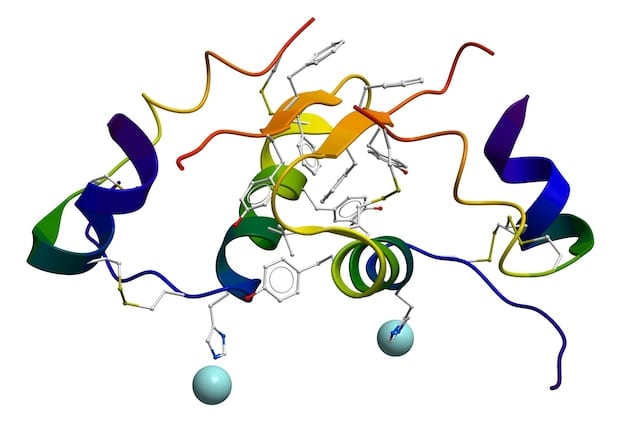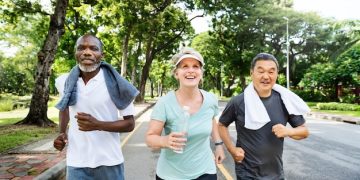Maximize Your Workout: The Science Behind Exercise for Optimal Results

Understanding the science behind exercise involves grasping how physiological processes like energy expenditure, muscle adaptation, and hormonal responses are affected by different training modalities, enabling individuals to optimize their workouts for enhanced performance and health benefits.
Embarking on a fitness journey can be exciting, but **understanding the science behind exercise** is key to maximizing your workout for optimal results. Delving into the physiological responses and adaptations triggered by different exercises allows you to create a more effective and personalized fitness plan.
The Science of Energy Expenditure During Exercise
Understanding how your body uses energy during exercise is fundamental to achieving your fitness goals. Different activities require different energy systems, and knowing this can help you tailor your workouts for specific outcomes.
The body utilizes different energy systems depending on the intensity and duration of the exercise. This understanding forms the bedrock for designing effective workout strategies.
ATP-PC System
The ATP-PC system provides immediate energy for short bursts of high-intensity activity.
Glycolytic System
The glycolytic system kicks in for activities lasting a bit longer, breaking down glucose for energy.
Oxidative System
The oxidative system is the primary energy source for endurance activities, using oxygen to fuel your muscles over the long haul.

- ATP-PC System: Ideal for activities like sprinting or heavy lifting.
- Glycolytic System: Suited for high-intensity intervals lasting a few minutes.
- Oxidative System: Perfect for long-distance running or cycling.
By understanding how these energy systems work, you can better structure your workouts to target specific energy pathways and improve your overall fitness.
Muscle Adaptation and Hypertrophy
Muscle adaptation is the cornerstone of strength and endurance improvements. When you exercise, your muscles respond by becoming stronger and more efficient. Understanding this process can help you optimize your training for muscle growth and strength gains.
Exercise places stress on muscle fibers, leading to microscopic damage. The body repairs this damage, resulting in stronger and larger muscles over time.
The Role of Protein Synthesis
Protein synthesis is crucial for muscle repair and growth. Ensuring you consume enough protein is vital for muscle adaptation.
Mechanical Tension and Metabolic Stress
Mechanical tension and metabolic stress are key drivers of muscle hypertrophy. Varying your exercises can help maximize these stimuli.
- Progressive Overload: Gradually increasing the weight, reps, or sets.
- Proper Nutrition: Consuming adequate protein and carbohydrates.
- Rest and Recovery: Allowing muscles time to repair and rebuild.
Muscle adaptation is not just about getting bigger; it’s also about becoming stronger and more resilient. By understanding the mechanisms behind it, you can train more effectively.

The Endocrine Response to Exercise
Exercise profoundly impacts your endocrine system, influencing hormone levels that affect everything from muscle growth to mood regulation. Understanding these hormonal responses can help you fine-tune your workouts for holistic benefits.
Exercise triggers the release of several key hormones that play crucial roles in your body’s response and adaptation to physical activity.
Testosterone and Growth Hormone
Resistance training stimulates the release of testosterone and growth hormone, both essential for muscle growth and repair.
Cortisol and Stress Management
While cortisol is often vilified, it plays a crucial role in mobilizing energy during exercise. However, chronic elevation can be detrimental, emphasizing the importance of balanced training and recovery.
Endorphins and Mood
Exercise releases endorphins, which have mood-boosting effects and can help reduce stress and anxiety.
Harnessing the endocrine response can significantly enhance the benefits of your workouts, improving everything from muscle growth to mental well-being.
Cardiovascular Adaptations to Exercise
Cardiovascular adaptations are central to improving your overall fitness and health. Exercise strengthens your heart, improves circulation, and enhances your body’s ability to deliver oxygen to working muscles.
Regular exercise strengthens the heart muscle, making it more efficient at pumping blood with each beat.
Increased Stroke Volume
Stroke volume, the amount of blood pumped per beat, increases with regular exercise, allowing your heart to work more efficiently.
Lower Resting Heart Rate
A lower resting heart rate indicates improved cardiovascular fitness, as your heart doesn’t have to work as hard at rest.
Improved VO2 Max
VO2 max, the maximum amount of oxygen your body can use during exercise, increases with regular cardiovascular training, enhancing your endurance capacity.
- Aerobic Exercise: Activities like running, swimming, and cycling are excellent for improving cardiovascular fitness.
- Interval Training: Alternating between high-intensity bursts and periods of rest can significantly improve VO2 max and cardiovascular efficiency.
- Consistency: Regular exercise is key to achieving and maintaining cardiovascular adaptations.
By understanding and targeting these cardiovascular adaptations, you can significantly improve your overall health and fitness level.
Nutrition and Recovery: Fueling Your Performance
Nutrition and recovery are integral parts of any exercise regimen. Proper nutrition fuels your workouts, supports muscle repair, and replenishes energy stores, while adequate recovery allows your body to adapt and improve.
What you eat before, during, and after your workouts can significantly impact your performance and recovery.
Pre-Workout Nutrition
Consuming a balanced meal or snack containing carbohydrates and protein before your workout provides fuel for energy and supports muscle function.
Intra-Workout Nutrition
During longer workouts, consuming carbohydrates can help maintain blood sugar levels and prevent fatigue.
Post-Workout Nutrition
After your workout, consuming protein and carbohydrates helps repair muscle damage and replenish glycogen stores.
- Protein: Essential for muscle repair and growth.
- Carbohydrates: Replenish glycogen stores, providing energy for future workouts.
- Hydration: Crucial for overall performance and recovery.
- Sleep: Adequate sleep is vital for muscle repair and hormonal balance.
By prioritizing nutrition and recovery, you can optimize your performance and reap the full benefits of your exercise efforts.
Designing an Effective Exercise Program
Designing an effective exercise program requires understanding your goals, assessing your current fitness level, and applying scientific principles to create a balanced and progressive plan. A well-designed program maximizes results while minimizing the risk of injury.
A customized exercise program should align with your specific goals, whether it’s weight loss, muscle gain, or improved cardiovascular fitness.
Setting Realistic Goals
Setting SMART (Specific, Measurable, Achievable, Relevant, Time-bound) goals is crucial for staying motivated and tracking progress.
Assessing Fitness Level
Before starting any new program, it’s important to assess your current fitness level through tests like a VO2 max test, strength assessments, and flexibility evaluations.
Balancing Cardio and Strength Training
A well-rounded program includes both cardiovascular exercise and strength training to improve overall fitness and health.
Crafting the optimal fitness plan involves balancing various factors and regularly tweaking your regimen for maximum effect.
- Warm-Up: Preparing your body for exercise.
- Cool-Down: Gradually decreasing intensity to aid recovery.
- Progression: Gradually increasing the intensity or volume of exercise over time.
- Variety: Incorporating different exercises to prevent boredom and overuse injuries.
Embarking on a fitness program grounded in scientific principles will boost your odds of long-term success.
| Key Point | Brief Description |
|---|---|
| 💪 Muscle Adaptation | Muscles grow stronger and larger due to stress from exercise. |
| ❤️ Cardio Adaptations | Heart becomes more efficient, improving overall fitness and health. |
| ⚡ Energy Systems | Understanding ATP-PC, Glycolytic, and Oxidative systems helps tailor workouts. |
| 🍽️ Nutrition & Recovery | Proper nutrition fuels workouts and supports muscle repair and energy replenishment. |
Frequently Asked Questions
▼
Higher intensity exercises primarily use the ATP-PC and Glycolytic systems, while lower intensity, longer duration exercises rely more on the Oxidative system.
▼
▼
▼
▼
Conclusion
By **understanding the science behind exercise** and its various aspects, from energy expenditure to hormonal responses and cardiovascular adaptations, you can create a more effective, personalized, and rewarding fitness journey, ultimately leading to better results and improved overall well-being.





